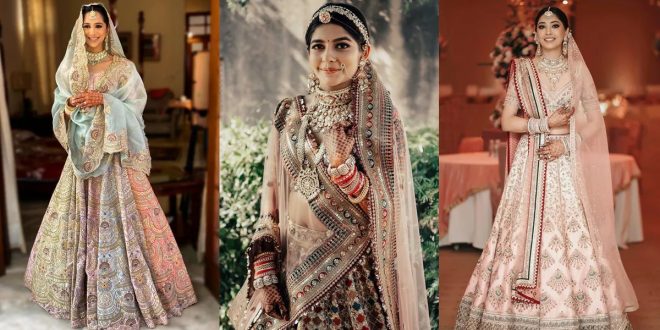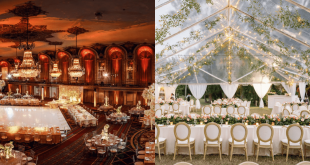As the bridal season of 2024 approaches, brides-to-be are eagerly exploring innovative and breathtaking dupatta draping styles to add an extra touch of elegance to their wedding attire. The dupatta, an essential component of many traditional bridal ensembles, offers a canvas for creativity, allowing modern brides to blend traditional elements with contemporary flair. With options ranging from the classic over-the-head style to modern lehenga dupatta styles, understanding how to drape dupatta on lehenga or how to wear lehenga dupatta has never been more crucial. This transition from classic to contemporary styles not only highlights the versatility of the dupatta but also enables brides to personalize their looks to reflect their unique personalities and stories.
This article delves into the myriad of dupatta draping styles available for the 2024 bride, providing a comprehensive guide on everything from single side draping styles to the more elaborate double dupatta styles. For those wondering how to give their bridal lehenga an updated look, the sections on flow and freestyle draping, elbow draping styles, and belted dupatta styles offer fresh, stylish options. Additionally, for brides aiming to embrace the grandeur of traditional bridal wear, detailed insights into bridal lehenga dupatta draping styles will serve as a valuable resource. Join us as we explore these captivating dupatta draping styles for bridal lehenga, ensuring every bride finds the perfect style to complement her wedding day look.
Over The Head Styles
Traditional Over the Head
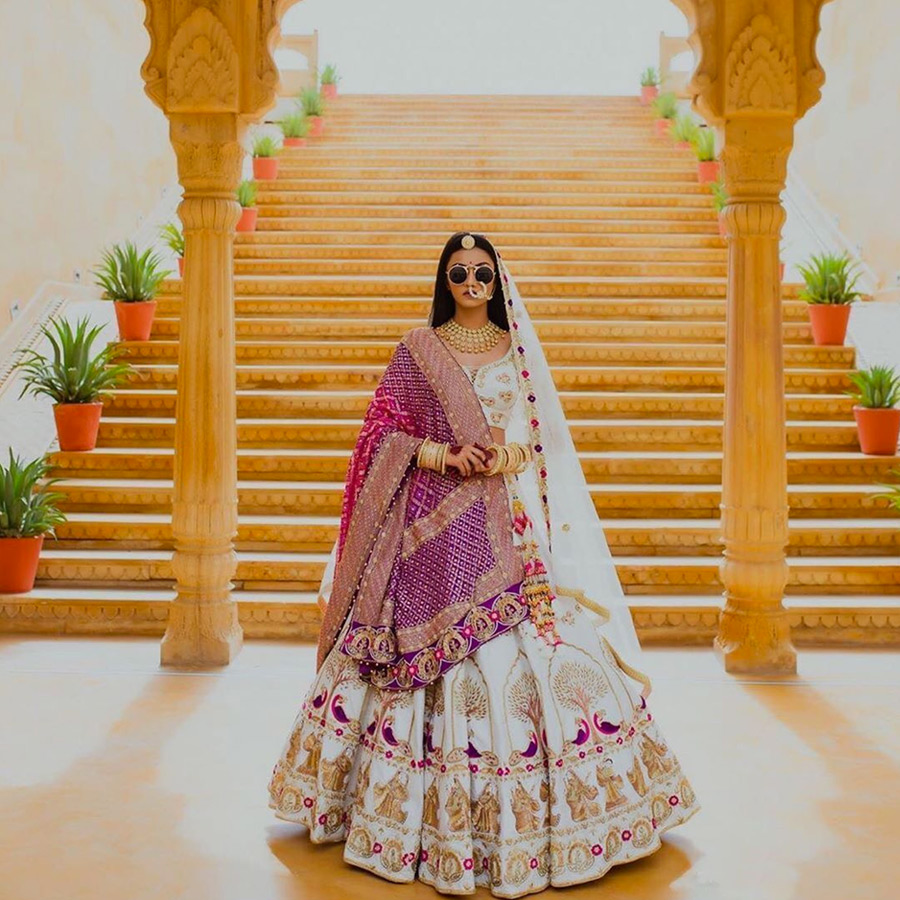
The quintessential bridal look often starts with the traditional over the head style. This method involves simply pinning the dupatta at the top of the bride’s head, allowing one end to elegantly cascade to the front and the other to drape gracefully down the back. This style not only secures the dupatta throughout the day’s festivities but also frames the bride’s face beautifully, adding a touch of regal elegance.
Over the Head, Pinned to the Wrist

Building on the traditional approach, another popular style involves extending the back draping of the dupatta to the wrist. After securing the dupatta over the head, the loose end that hangs at the back is gently brought forward and pinned to the wrist. This style adds a dynamic element to the bride’s movements, creating a flowing effect that is both stunning and practical.
Over the Head, Across the Chest
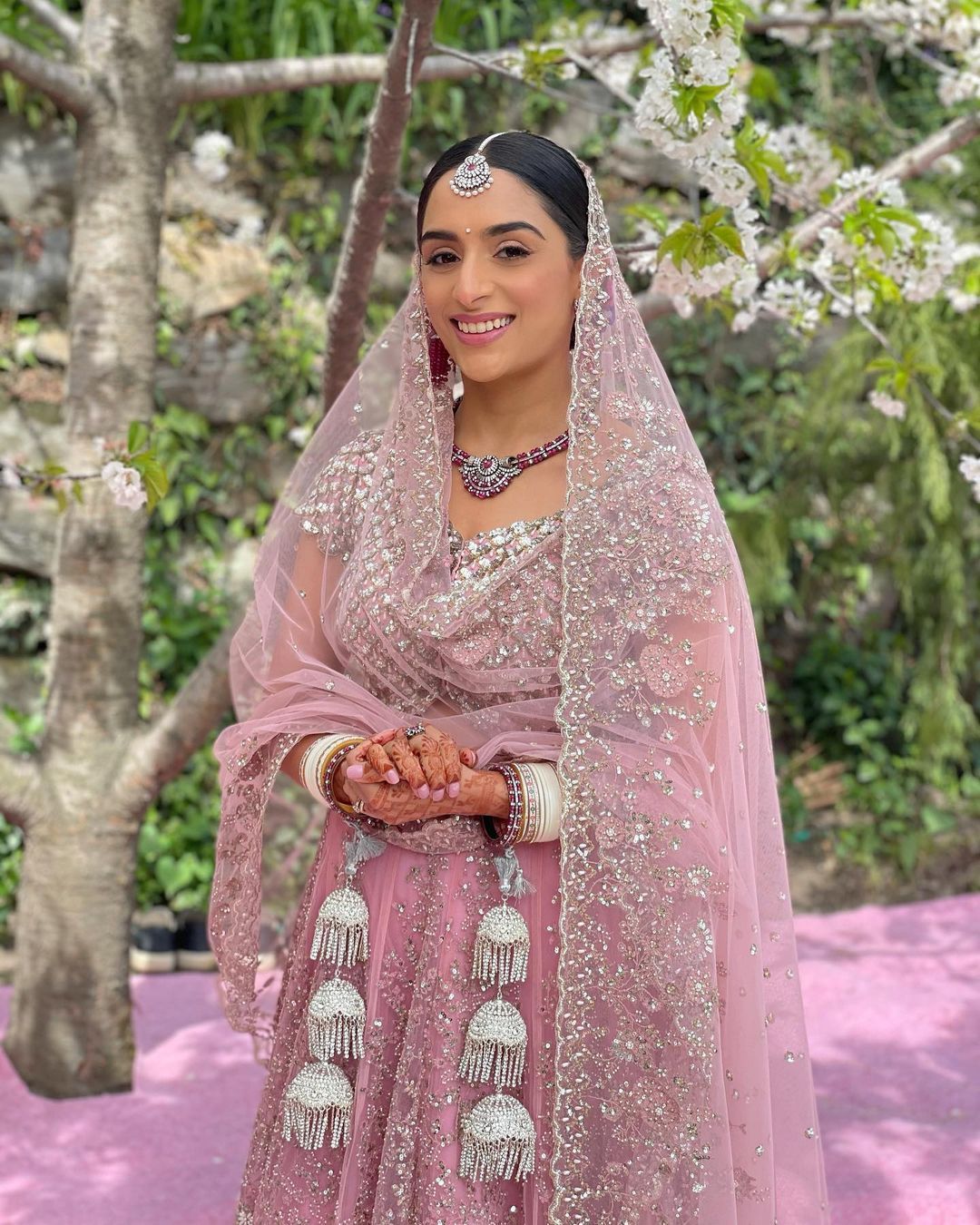
Inspired by Sikh bridal traditions, this style adds a distinctive look to the bridal ensemble. After pinning the dupatta over the head, both ends are brought forward. One end is wrapped across the chest, much like a shawl, and can be secured on the opposite side. This draping technique not only offers additional coverage but also enhances the outfit’s overall grace, making it a favored choice for brides seeking both style and modesty.
These over the head styles are versatile and can be adapted to suit various bridal looks, from the most traditional to the more modern interpretations. Each style ensures the dupatta remains a central element of the bridal attire, symbolizing grace and tradition while providing practicality and comfort.
Single Side Draping Styles
Pinned on One Side
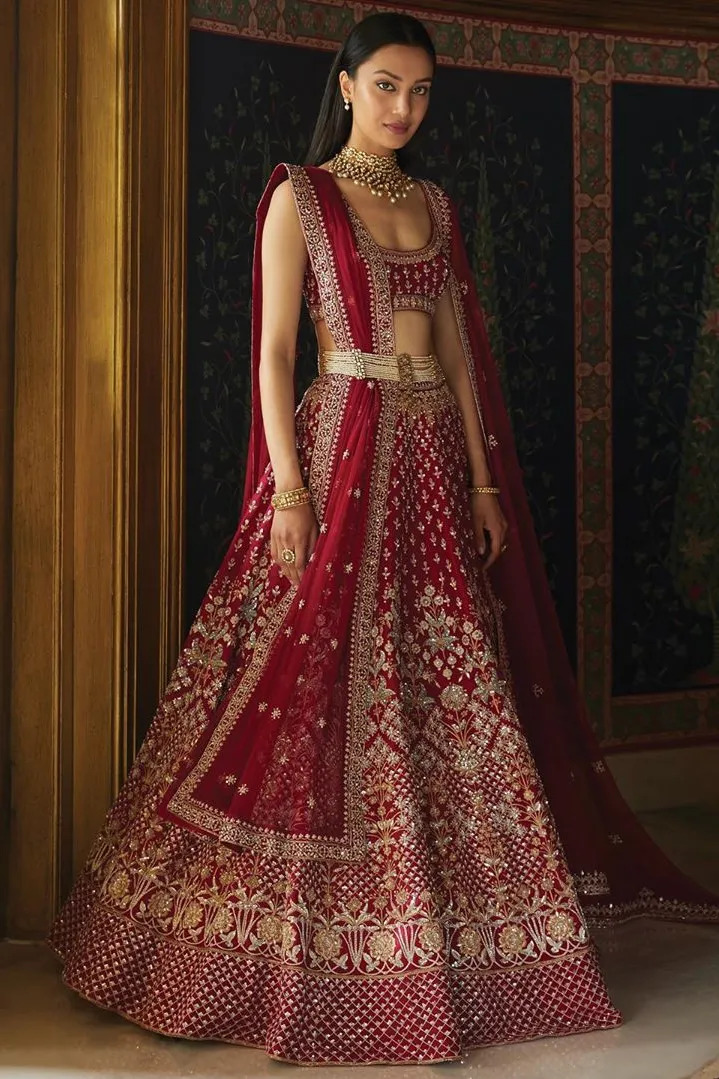
For brides seeking a look that’s both elegant and effortless, pinning the dupatta on one side of the head offers a chic solution. This style allows the fabric to cascade beautifully over the shoulder, creating a dramatic silhouette that enhances the bridal attire. It’s an excellent choice for those who wish to showcase intricate embroidery or the delicate details of their blouse and lehenga.
Pin on One Side, Falling Over the Hand
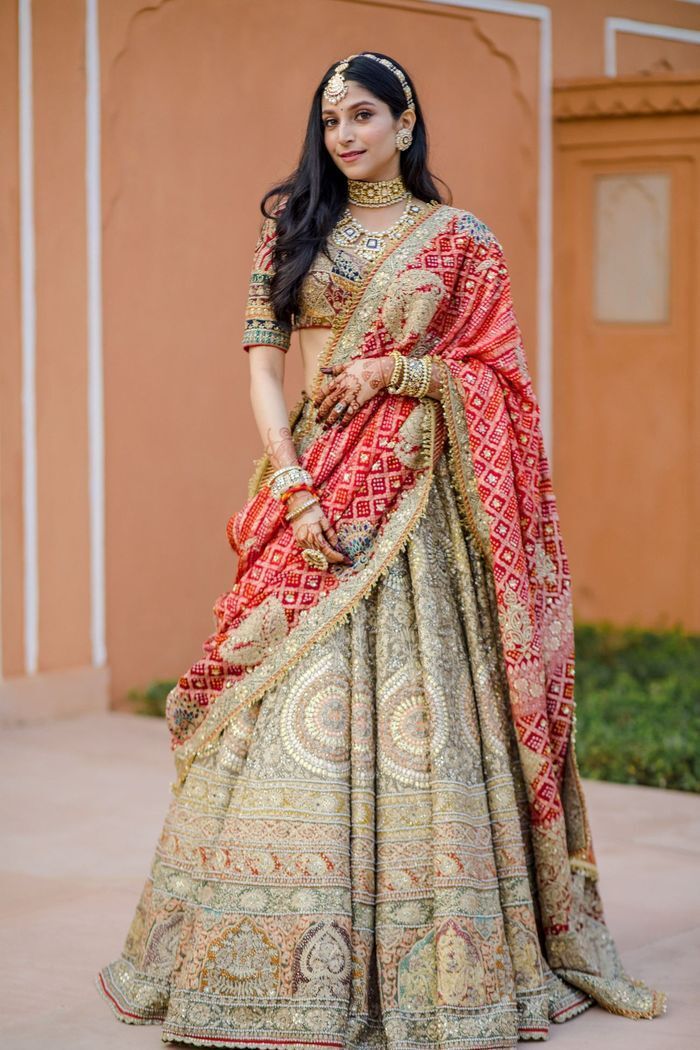
Adding a whimsical touch to the traditional draping styles, this method involves pinning the dupatta on the head and extending it to the wrist. This draping style not only secures the dupatta in place, ensuring it doesn’t shift during the wedding festivities, but also adds a unique, gypsy-like charm to the ensemble. The draped fabric over the arm serves as a built-in accessory, perfect for brides who prefer to keep their jewelry minimal.
On The Bun, Pleats On One Shoulder

Ideal for pre-wedding events like the sangeet or mehendi, this style involves pinning the dupatta low on the bun and neatly pleating it over one shoulder. This method ensures the dupatta stays in place, allowing the bride to move freely and participate in the festivities. The pleated drape adds a touch of sophistication and is perfect for brides who prefer a more structured look to their dupatta styling.
Flow and Freestyle Draping
Hanging on the Shoulders
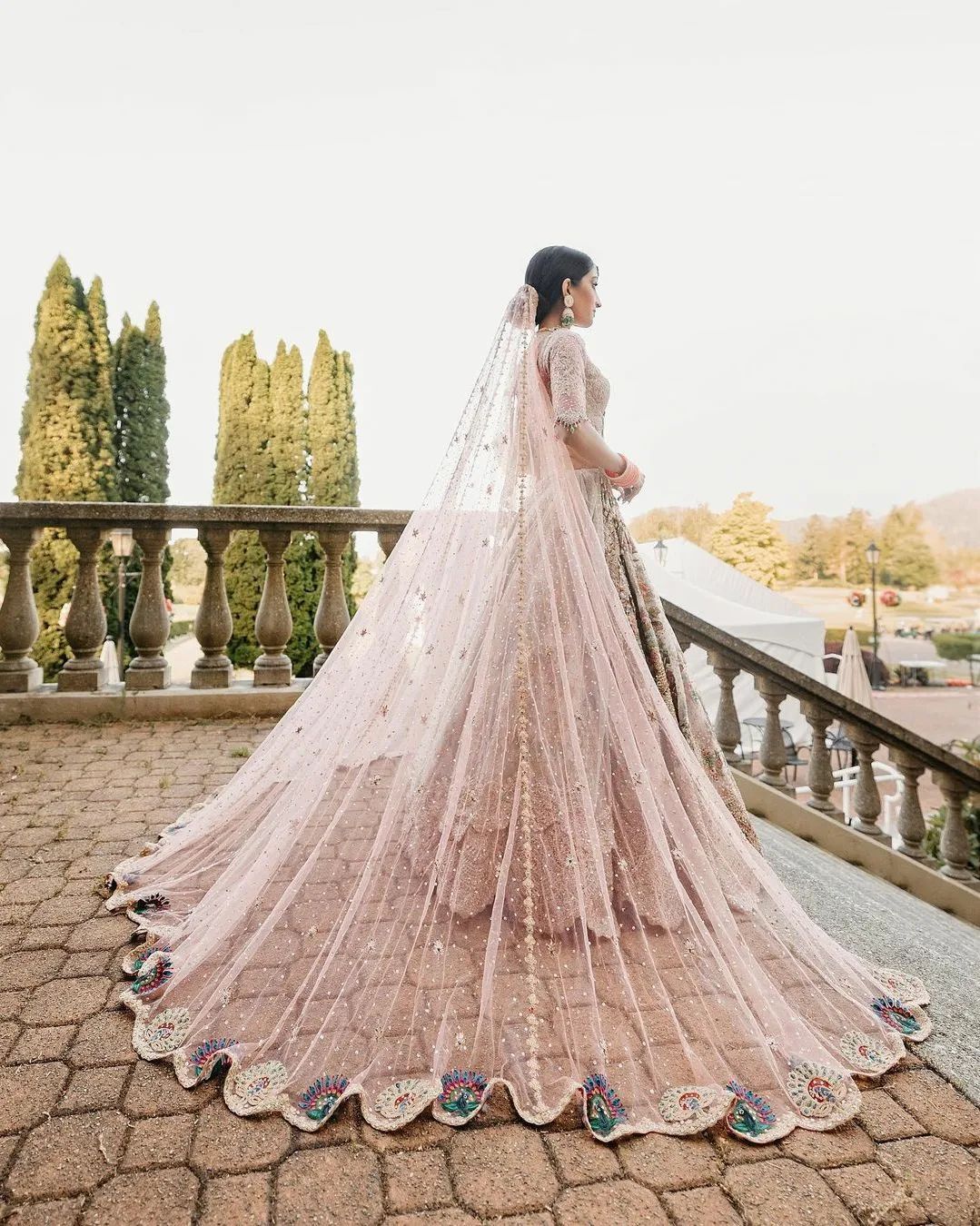
For a relaxed yet stylish appearance, draping the dupatta loosely over the shoulders offers a modern twist to traditional bridal wear. This style is particularly suitable for brides who prefer minimalistic elegance. It allows the dupatta to flow naturally, highlighting the intricate work on the fabric while maintaining an air of casual grace. This approach is not only visually appealing but also practical, as it keeps the dupatta secure without restricting movement.
The Queen Drape
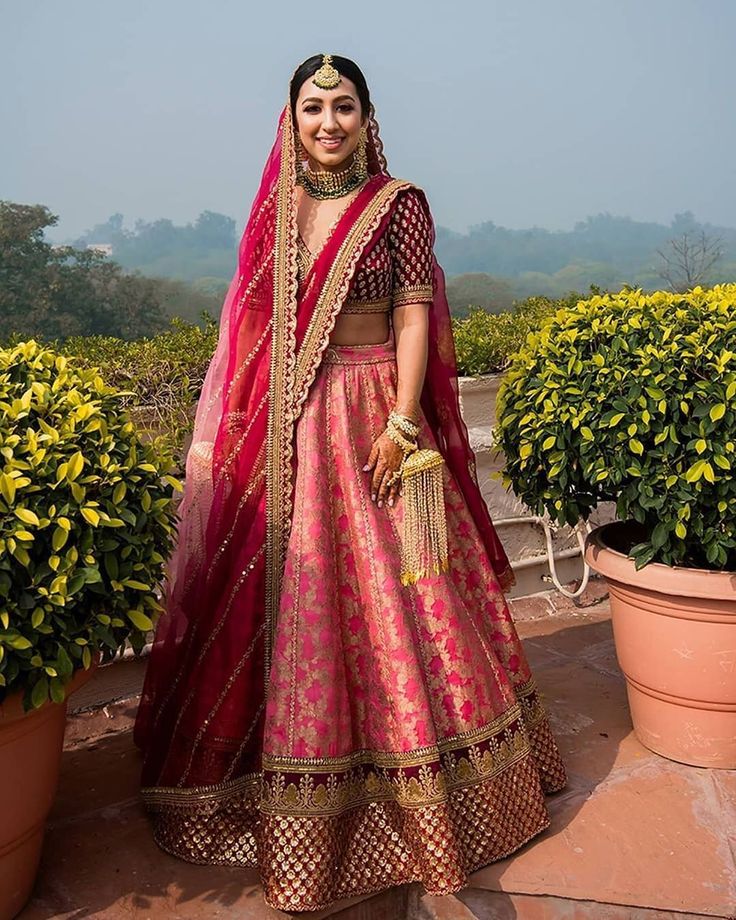
Embodying regal elegance, the Queen Drape involves pinning the dupatta to the head, allowing it to cascade down majestically. This style enhances the bridal silhouette by adding a layer of sophistication and royal allure. It’s perfect for those who wish to make a dramatic entrance and stand out on their special day. The Queen Drape is a nod to traditional aesthetics while still allowing room for individual flair and creativity.
Let Your Dupatta Shine
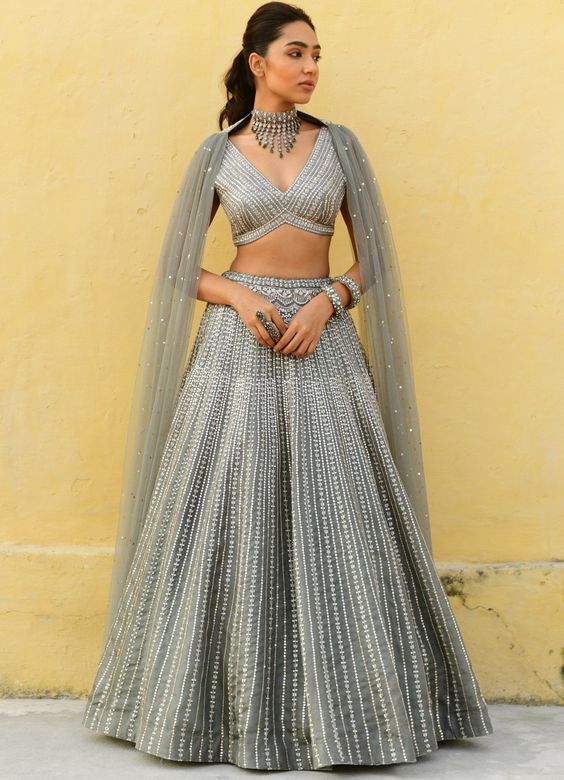
This style focuses on showcasing the dupatta’s beauty by draping it in a manner that highlights its features. Whether it’s the rich embroidery, vibrant colors, or unique patterns, this draping method ensures that the dupatta remains a focal point of the bridal ensemble. By wrapping it across the shoulders and bringing the ends forward, the bride can display the exquisite details of her dupatta, making it a key element of her wedding attire. This method not only adds a touch of glamour but also personalizes the bridal look, reflecting the bride’s unique style and personality.
Elbow Draping Styles
Over the Elbows
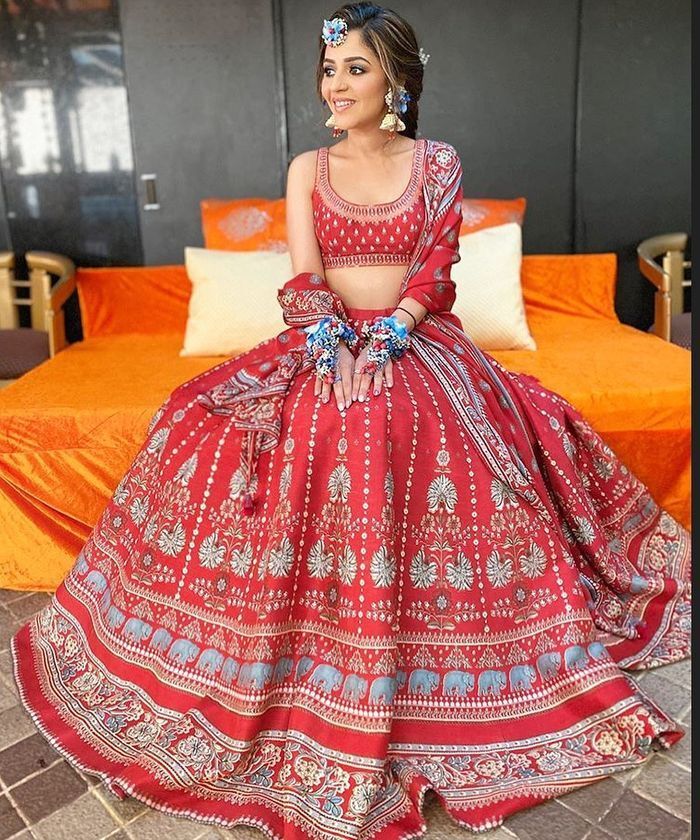
One of the most time-honored methods to showcase the beauty of a dupatta while ensuring that the lehenga remains fully visible is the “Over the Elbows” style. This draping technique involves holding the dupatta around the elbows, allowing it to drape softly over the arms. This style is particularly suited for brides who wish to highlight the intricate work on their lehenga, as it keeps the dupatta from covering any part of the outfit. However, brides should be mindful that this style might limit movement slightly, as the dupatta is not secured with pins.
Double Over the Elbows
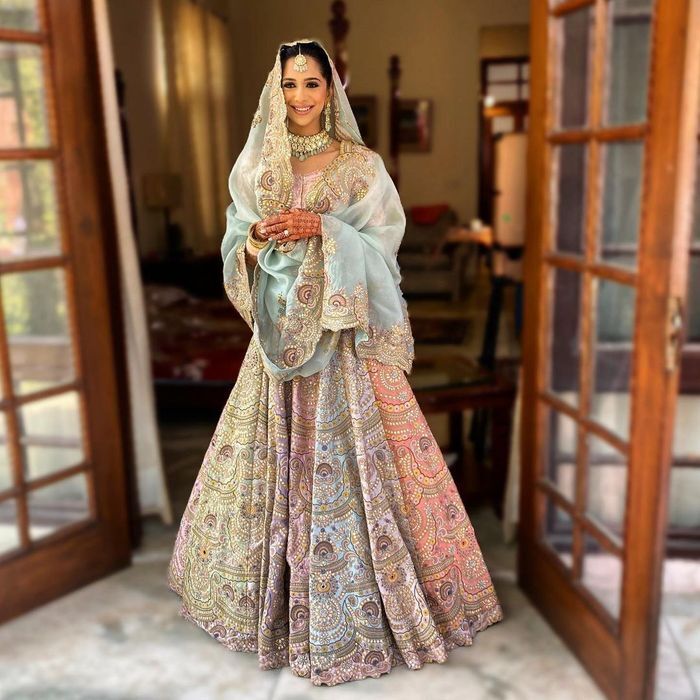
For brides who choose to incorporate two dupattas in their bridal look, the “Double Over the Elbows” style offers an elegant solution. This approach involves draping one dupatta over the head, typically pinned in place for security, and the second dupatta wrapped around both elbows. This can be draped over one arm for added style or across the body diagonally for a more dynamic and structured look. This method not only secures the rich fabric in place but also creates a beautiful layered effect, adding depth and richness to the bridal ensemble. This style is perfect for showcasing different colors and textures of dupattas that complement the lehenga beautifully.
Belted Dupatta Styles
Add A Belt
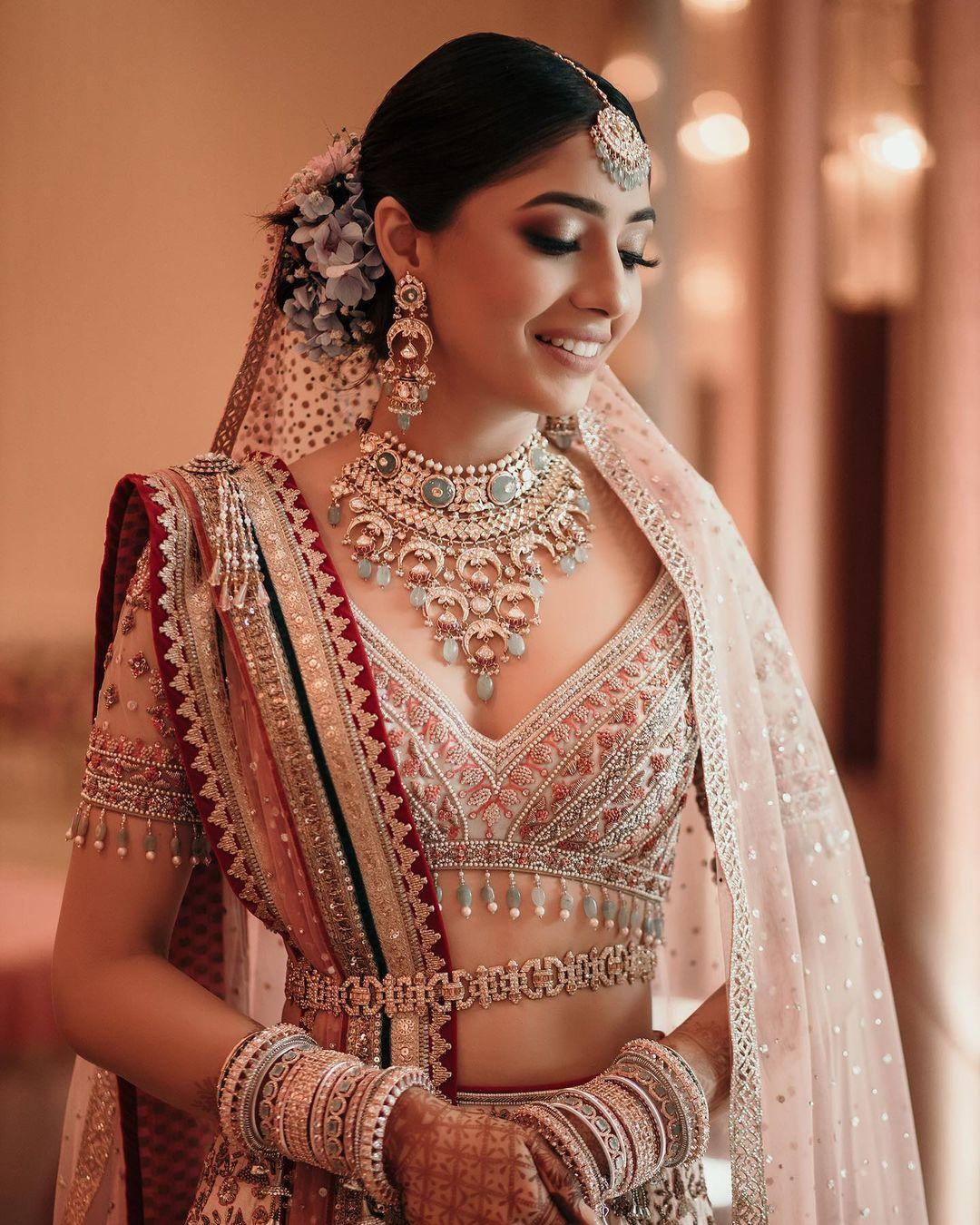
The belted dupatta style introduces a chic and contemporary twist to traditional bridal attire. By draping the dupatta around the shoulders and securing it with a stylish belt around the waist, this method not only keeps the dupatta neatly in place but also accentuates the waistline, creating a flattering silhouette. This style is particularly effective for showcasing the intricate embroidery and vibrant colors of the dupatta while adding a modern, structured look to the ensemble.
- Securing the Dupatta: Start by draping the dupatta over your shoulders. Ensure that it is evenly pleated and arranged neatly across the front and back.
- Adding the Belt: Choose a belt that complements your outfit. Wrap it around your waist over the dupatta and secure it tightly. This not only cinches the waist but also adds a layer of sophistication and polish to the overall look.
- Adjusting for Comfort and Style: After belting, adjust the dupatta so that it falls gracefully over the arms and flows elegantly at the back. This ensures both comfort and mobility, allowing you to move freely throughout the event.
The Glamorous Drape
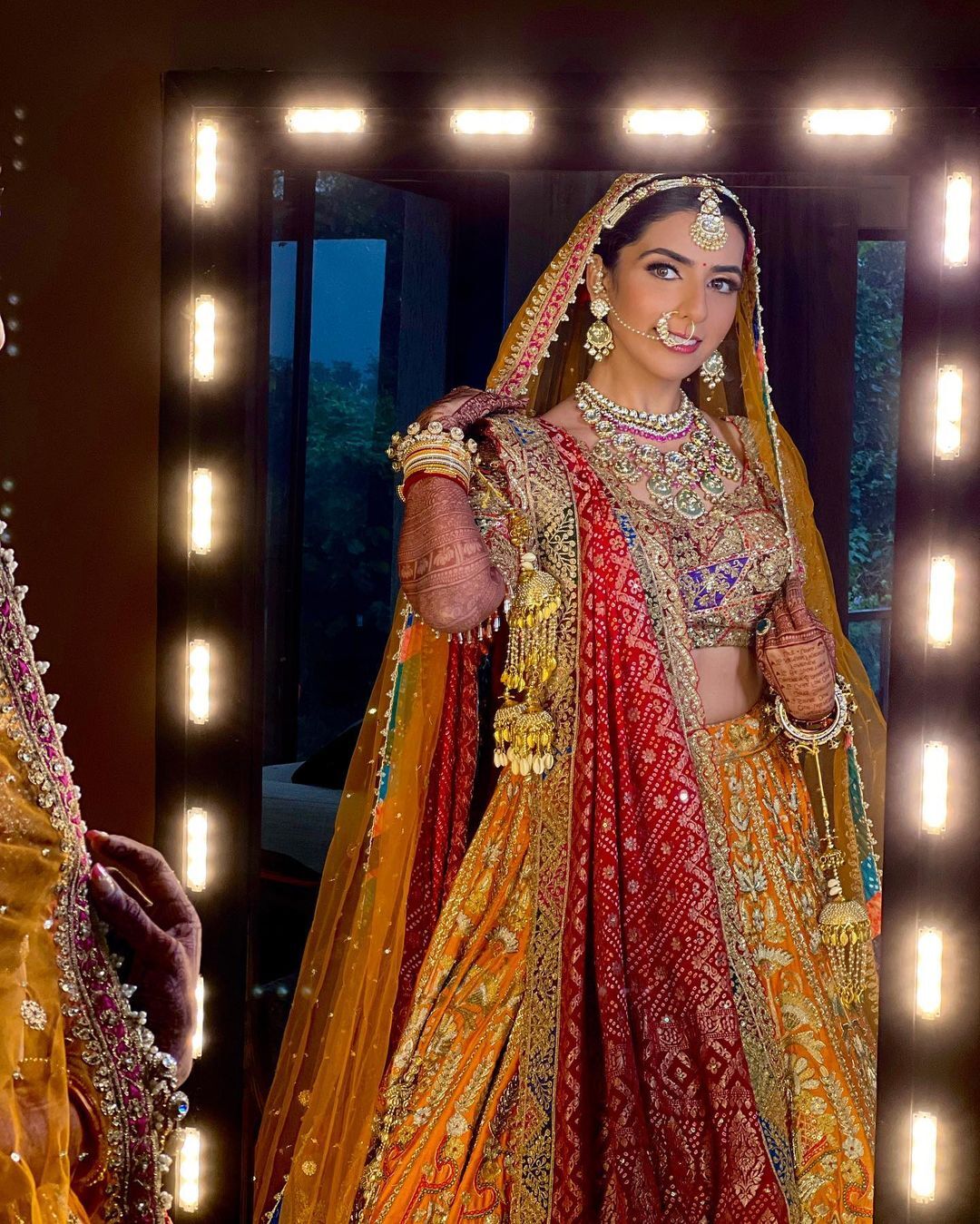
For an effortlessly stunning appearance, the belted dupatta can also be styled in a more glamorous fashion. This involves pinning one end of the dupatta to the shoulder, letting it cascade across the body like a sari pallu, and securing it with a belt at the waist. This style is perfect for brides who want to combine the traditional charm of a dupatta with the elegance of a sari.
- Pin at the Shoulder: Take one end of the dupatta and pin it securely to one shoulder. This will be the starting point of your drape.
- Create the Pallu: Pleat the dupatta neatly and let it fall over the front, mimicking the drape of a sari pallu. This adds an element of grace and movement to the drape.
- Secure with a Belt: Place a belt over the waist, ensuring it overlaps the dupatta. This not only holds the drape in place but also highlights the waist, creating a stunning and cohesive bridal look.
These belted dupatta styles are not just fashionable but also functional, providing comfort and ease on your special day. Whether you opt for a simple, elegant drape or a more elaborate glamorous style, the addition of a belt transforms the traditional dupatta into a modern fashion statement, making it a must-try for any fashion-forward bride.
Double Dupatta Styles
The Double Dupatta
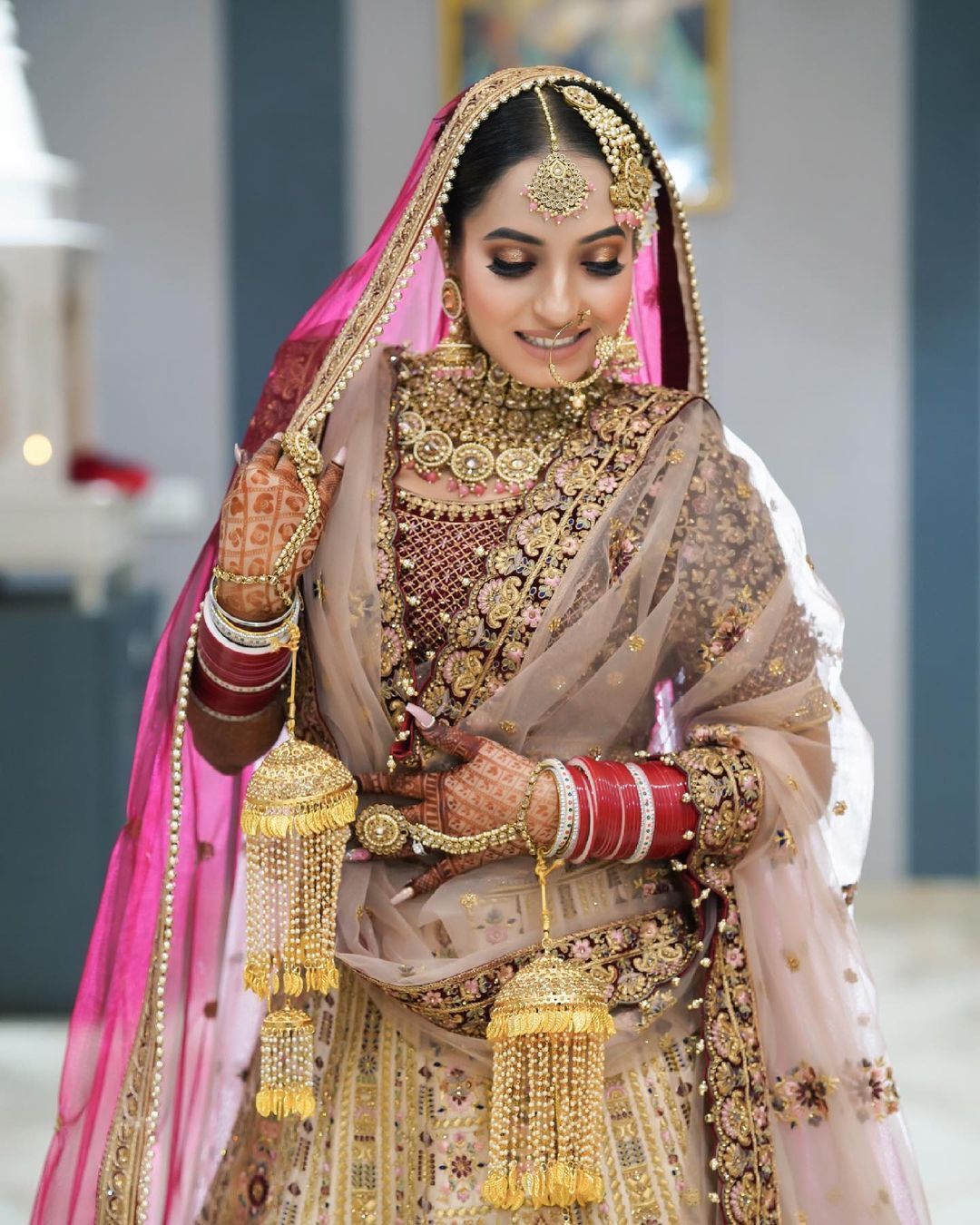
Embracing a trend that adds layers of elegance and tradition to bridal attire, the double dupatta style is a favorite among contemporary brides. This approach allows for a rich display of fabric and design, offering a majestic look that blends beautifully with the bridal lehenga. One classic method involves draping one dupatta over the head as a veil, reflecting the quintessential bridal charm, while the second dupatta can be styled in various creative ways to enhance the overall ensemble.
One Over The Head, The Other Over One Shoulder
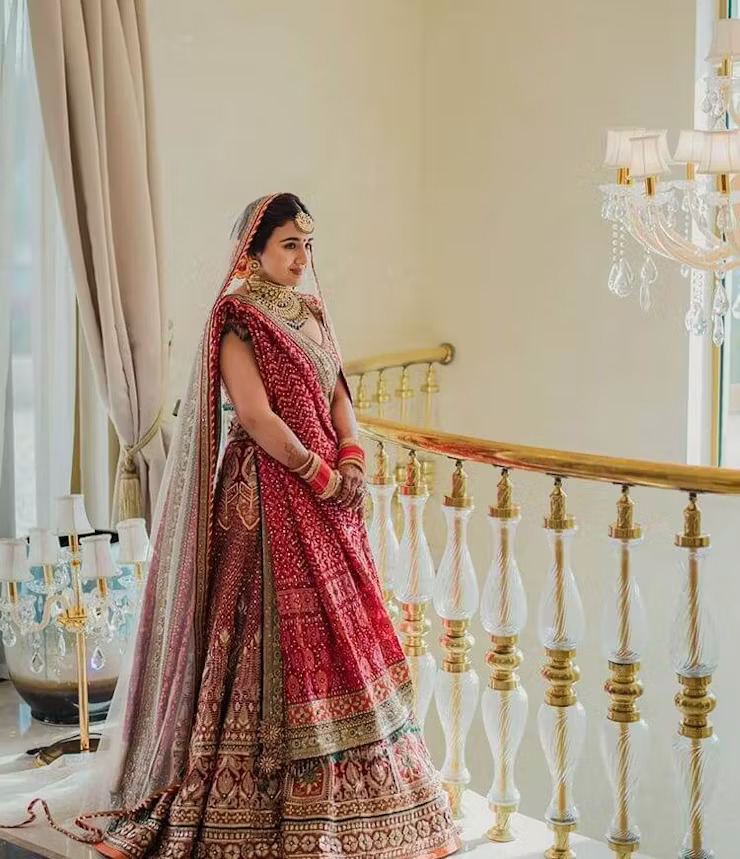
A popular choice for those who appreciate symmetry and grace, this style involves draping one dupatta over the head, secured neatly at the crown, and letting it cascade down the back. The second dupatta is gracefully draped over one shoulder and can either hang loosely or be pinned for a more structured look. This style not only adds an element of depth to the bridal outfit but also allows each dupatta to shine individually, showcasing their intricate details.
One Over The Head, Other Like A Saree

For a look that is both innovative and traditional, brides can choose to drape one dupatta over the head, securing it in place with ornate pins. The second dupatta, mimicking the elegance of a saree pallu, is pleated and draped across the body, secured at the waist with a stylish belt. This not only emphasizes the waistline but also offers a stunning visual contrast, making it a perfect choice for brides seeking to combine classic and contemporary styles in their wedding attire.
By incorporating these double dupatta styles, brides can achieve a look that is both regal and unique, perfectly suited for their grand day. Each style offers its own charm and can be tailored to match the personality and preference of the bride, ensuring that she feels nothing less than spectacular on her special day.
Conclusion
As we have explored the vast and vibrant world of dupatta draping styles, from the classic to the contemporary, it is clear that the choices for 2024 brides are as diverse and unique as their individual personalities. Whether opting for the elegance of over-the-head styles, the chic simplicity of single side drapes, the innovative flair of belted styles, or the majestic allure of double dupatta arrangements, each style offers its own narrative. These draping methods not only pay homage to tradition but also celebrate the modern bride’s desire to innovate, personalize, and make a statement on her wedding day.
In essence, the way a bride chooses to drape her dupatta can significantly influence her overall bridal look, blending seamlessly with her attire to create an unforgettable image of grace and elegance. As these styles continue to evolve, they encourage future brides to think creatively and express their unique style, ensuring their wedding day look is as memorable and distinctive as their journey. The significance of the dupatta in bridal attire underscores not just tradition but also the personal touch it brings to the wedding ensemble, making it a pivotal aspect of bridal fashion to consider for the 2024 bride.
FAQs
1. What are some modern ways to style a dupatta?
A. Modern dupatta styling involves creative and unconventional draping methods that can complement contemporary outfits. Experiment with different drapes to find a style that enhances your look.
2. How should I select a bridal dupatta?
A. When choosing a bridal dupatta, consider whether you want to wear one or two dupattas. Most lehengas come with only one dupatta, so you may need to request a second one from your designer. Decide if you want the dupattas to match the color of your lehenga or if you prefer a contrasting color that complements it.
3. Can you explain how to drape a dupatta in the style of Sabyasachi?
A. The Sabyasachi style of draping a dupatta typically involves elegant and traditional methods that highlight the intricate work on the fabric, though the specific techniques can vary based on the outfit and personal preference.
4. What is the recommended way to wear a dupatta?
A. For a neat and structured look, especially with cotton and linen dupattas, drape one end of the dupatta over your right shoulder. Wrap the other end around your back to your left shoulder and secure it with a pin. This method ensures the dupatta stays in place and adds grace to your ensemble.
Book the best Bridal wear in your city, contact us at venuelook.com/bridal-wear/delhi/vendors
For value-for-money A-Z of wedding planning and decorations, contact us at weddings.venuelook.com
You May Also Like:
- Trending Pagphera Outfit Inspirations for Newlywed Brides
- Fabulous Blouse Designs for Every Bride
- Trendy Outfits to Style Yourself for an Indian Wedding
- Bridal Wear Inspiration From Around The World
- Easy Homemade DIY Masks for Brides To Be
- Bridesmaids Who Set Goals By Coordinating Their Wedding Outfits!
- Charming Indian Wedding Dresses For Brides-Sister
Have you sent out invitations for your upcoming event? If not, save paper and send free online invitations now.

Looking for a party venue? Browse and book best-suited party venues from VenueLook.com
 Event, Party & Wedding Planning Tips & Ideas for Celebrations Party and Event Planning Tips, Resources and Venues
Event, Party & Wedding Planning Tips & Ideas for Celebrations Party and Event Planning Tips, Resources and Venues
